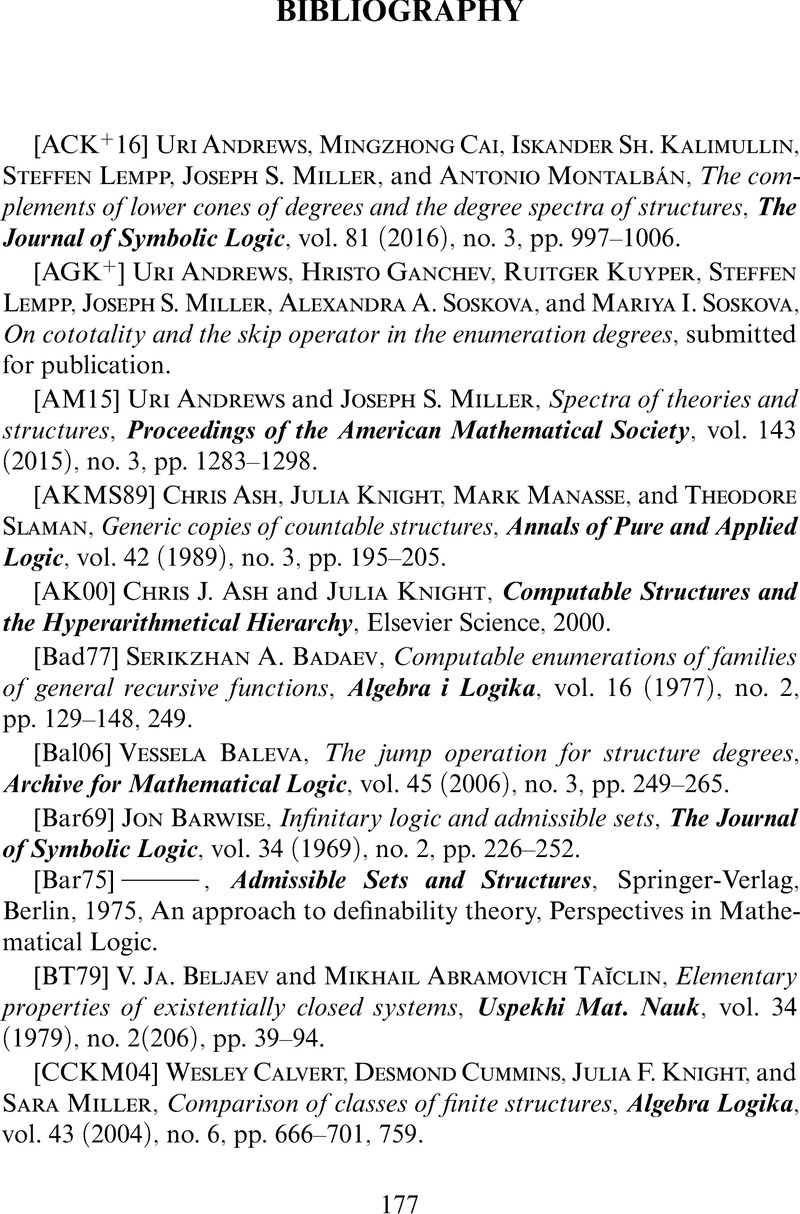Book contents
- Frontmatter
- Dedication
- Contents
- Preface
- Notation and Conventions
- Chapter 1 Structures
- Chapter 2 Relations
- Chapter 3 Existentially-Atomic Models
- Chapter 4 Generic Presentations
- Chapter 5 Degree Spectra
- Chapter 6 Comparing Structures and Classes of Structures
- Chapter 7 Finite-Injury Constructions
- Chapter 8 Computable Categoricity
- Chapter 9 The Jump of A Structure
- Chapter 10 Σ-Small Classes
- Bibliography
- Index
- References
Bibliography
Published online by Cambridge University Press: 11 June 2021
- Frontmatter
- Dedication
- Contents
- Preface
- Notation and Conventions
- Chapter 1 Structures
- Chapter 2 Relations
- Chapter 3 Existentially-Atomic Models
- Chapter 4 Generic Presentations
- Chapter 5 Degree Spectra
- Chapter 6 Comparing Structures and Classes of Structures
- Chapter 7 Finite-Injury Constructions
- Chapter 8 Computable Categoricity
- Chapter 9 The Jump of A Structure
- Chapter 10 Σ-Small Classes
- Bibliography
- Index
- References
Summary

- Type
- Chapter
- Information
- Computable Structure TheoryWithin the Arithmetic, pp. 177 - 186Publisher: Cambridge University PressPrint publication year: 2021



